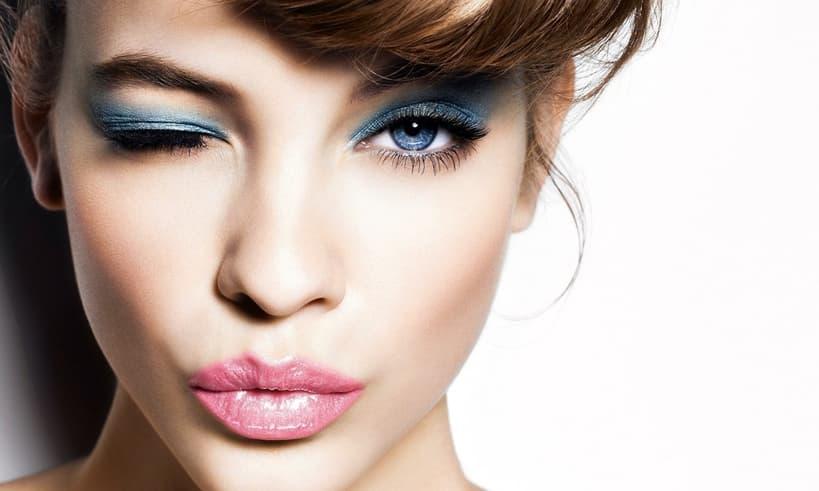Prior to applying makeup, the skin should be cleansed, toned and moisturized. This will help smooth the skin texture and act as a barrier before applying the makeup.
Concealer: Keep in mind that cream and liquid concealers are preferable for mature clients. Stick and tube concealers can be slightly drying especially under the eyes; they do, however, give a great coverage. Apply concealer to break-outs, redness and pigmentation areas, under the eyes and to any fine lines that might appear round the lips (this will prevent lipstick from bleeding).
Foundation: As we age our skin becomes uneven and often fades, so, when choosing a foundation for mature skins, avoid the darker shades since these will not look natural and the face might appear different in colour to the rest of the body. Choose a colour as close to the skin colour as possible. Cream-based foundations are ideal for mature clients because of their moisturising and greater coverage ability. Matte foundations can be slightly drying and dehydrating; however, they are great for younger skins. Sponges can be used when applying foundation; always wet the sponge first if using matte foundations since doing so will make application easier and give better coverage.
Face powder: Apply powder after the foundation. This prevents the skin from becoming shiny throughout the day and the foundation lasts longer. Always slightly stretch mature skins so that powder does not get caught in creases or become blotchy. Remove any excess powder by dusting lightly with a brush.
Eye makeup: Eyes are one of the first areas to show aging on the face. Indeed, fine lines and wrinkles may begin to appear in the early twenties. When choosing eye makeup the following points ought to be considered:
- Mature-age clients suit matte eye shadow and muted, natural colours
- Younger-age clients may suit frosted or glittered eye shadow
- Through-blending will achieve a nice look
- The use of a highlighted colour first, when applied to the eyelid and just below the eyebrow, will enhance the eyes and make them stand out
- What clothes are to be worn? Coordinating colours enhance fashion apparel.
- Generally, only three colours of eye shadow are applied. The first is a very soft, natural silver, cream or white shade applied on the eyelid extending to the brow bone just below the eyebrow. The second is a light, pastel shade applied just to the inner part of the eyelid but only half way. Finally, finish with the fashion colour that compliments to outfit to being worn. It is applied to the remaining outer half of the eyelid but not as far as the eyebrow; ensure that when the eyes are open the colour is visible.
- For mature clients, pencil eyeliners are preferable. Depending on the eye shape, they are usually applied to the outer edge of the eyes. For younger clients, cake or liquid eye liners are preferred; they give the eyes a more defined look. The most popular mascara colours include black, grey, brown, brown-black and taupe.
Eyebrow makeup: Eyebrow makeup helps to compensate for the thinning of eyebrows with age, to match hair-colour changes or simply to enhance the eyebrows. Another option is to eyebrow tinting. Eyebrow hairs may become coarser and grow much longer than usual, if so, they should be trimmed with small hand scissors to follow the natural brow shape.
Blusher: When applying blusher, follow the cheek bone. Take care not to extend blush too far up towards the eyes or too low on the cheek bones. Cheek bones become more pronounced with age and can give a gaunt appearance. Blushers should be neither too pale nor too bright. Frosted blushers are popular with younger skins.
Lip makeup: First apply lip pencil following the natural lip line; it helps if the lips are completely filled in. The texture of the lip pencil is a good base for lip colour and helps lipstick last longer. The lip colour chosen should match the eye colour and blusher.



